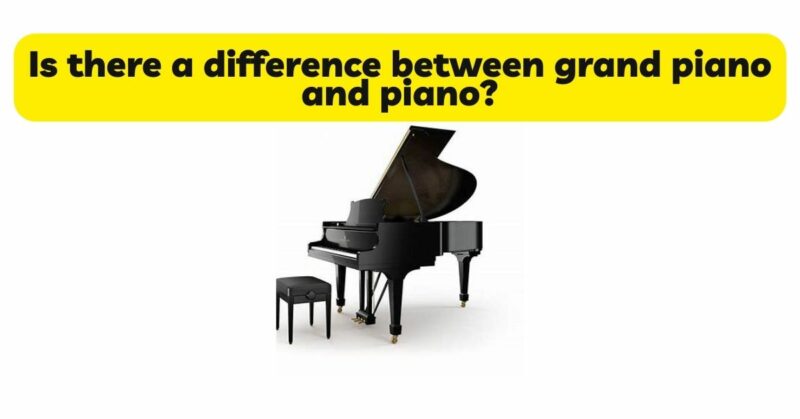When it comes to musical instruments, the piano has always held a place of prominence. Its rich tones and versatility make it a beloved choice for musicians and enthusiasts alike. However, within the realm of pianos, there exists a distinct classification that often captures attention and imagination: the grand piano. In this article, we will explore the fundamental differences between the grand piano and the piano, shedding light on their unique features, construction, sound production, and artistic expressions. By delving into the intricate details of these majestic instruments, we can gain a deeper appreciation for their nuanced characteristics.
- Historical Perspective: To truly comprehend the distinction between the grand piano and the piano, it is essential to understand their historical origins. The piano, often referred to as the “upright piano” or “piano-forte,” was first invented by Bartolomeo Cristofori in the early 18th century. Its revolutionary design, incorporating a hammer mechanism that struck the strings, allowed for dynamic expression and a wider range of tonal possibilities compared to its predecessors, such as the harpsichord.
- Anatomy and Construction: The physical structure and dimensions of the grand piano and piano contribute significantly to their divergence in sound and performance. The grand piano, characterized by its horizontal soundboard and the strings extending away from the player, boasts a larger size and a more intricate mechanism. On the other hand, the piano is a vertical instrument, featuring strings positioned in an upright manner. This distinction in orientation directly affects the manner in which sound is produced and projected.
- Sound Production and Tonality: The grand piano and piano diverge not only in physical structure but also in the tonal quality they produce. The grand piano, with its longer strings and larger soundboard, possesses a more resonant and full-bodied sound. The ability to sustain notes for extended durations and produce a wide dynamic range sets the grand piano apart, making it an instrument of choice for concert halls and virtuosos. Meanwhile, the piano, with its compact design and vertical strings, yields a more focused and direct sound, often preferred for intimate settings and practice purposes.
- Artistic Expression and Performance: The distinct characteristics of the grand piano and piano profoundly influence the artistic possibilities and performance styles of musicians. The grand piano’s extended range, responsive touch, and nuanced tonal palette make it an ideal instrument for interpreting complex compositions and expressing the full emotional spectrum of the music. Conversely, the piano’s more compact design, coupled with its precise action and control, allows for delicate articulation and refined expression, making it well-suited for a variety of musical genres and pedagogical applications.
- Practical Considerations: Beyond the artistic distinctions, there are practical considerations to keep in mind when choosing between a grand piano and a piano. The grand piano’s larger size requires ample space and proper acoustic conditions for optimal performance. Its weight and logistical challenges make it less portable compared to the piano. Conversely, the piano’s vertical design, smaller footprint, and more compact size make it a versatile instrument that can be accommodated in various settings, including smaller living spaces and music studios.
- Cost and Accessibility: Cost is often a significant factor when considering the acquisition of a grand piano or a piano. Due to their intricate construction, larger size, and premium materials, grand pianos tend to be more expensive than pianos. However, advancements in manufacturing techniques and the availability of a wide range of piano models have made pianos more accessible and affordable for aspiring musicians, students, and enthusiasts.
Conclusion: While both the grand piano and piano share a common heritage and serve as extraordinary musical instruments, their differences in construction, sound production, tonality, and performance capabilities are significant. The grand piano’s majestic presence, resonant sound, and expansive dynamic range make it a symbol of classical music and concert halls. The piano, with its compact design, versatile applications, and refined tonal quality, continues to captivate musicians and music lovers across a broad spectrum of genres and settings. Understanding the distinctions between these two remarkable instruments allows for a deeper appreciation of their unique qualities, enabling individuals to make an informed choice based on their musical aspirations and practical considerations.


